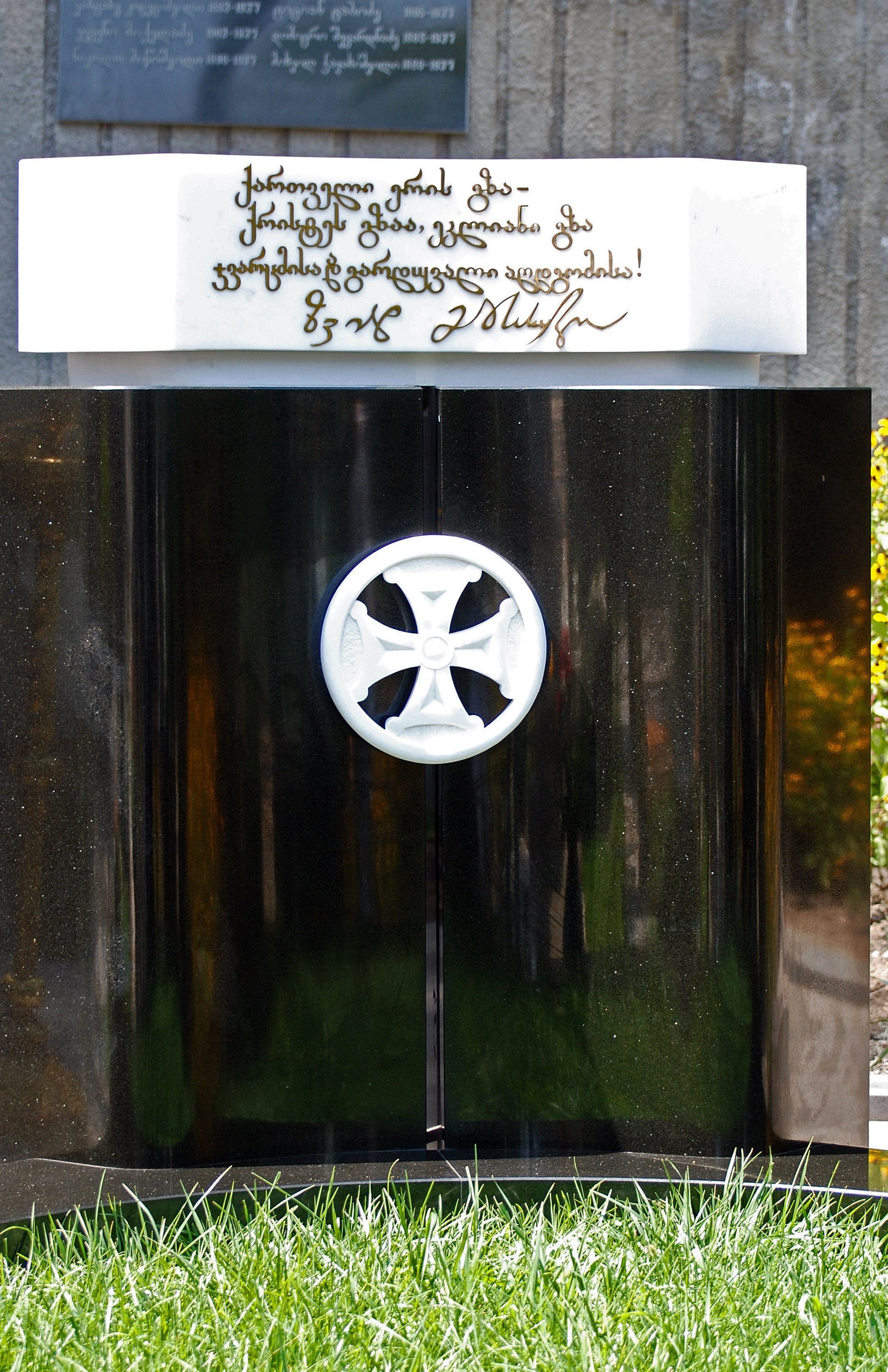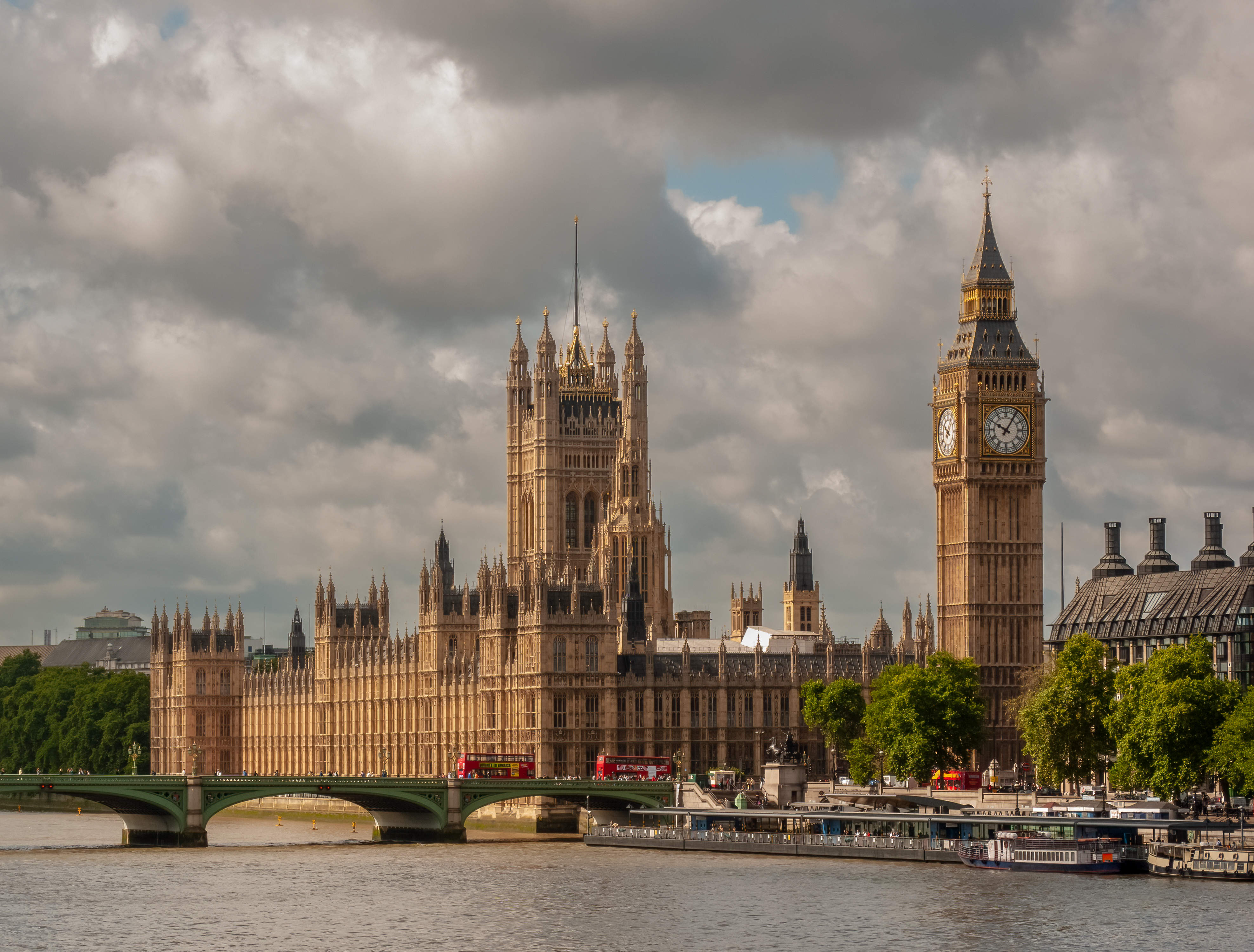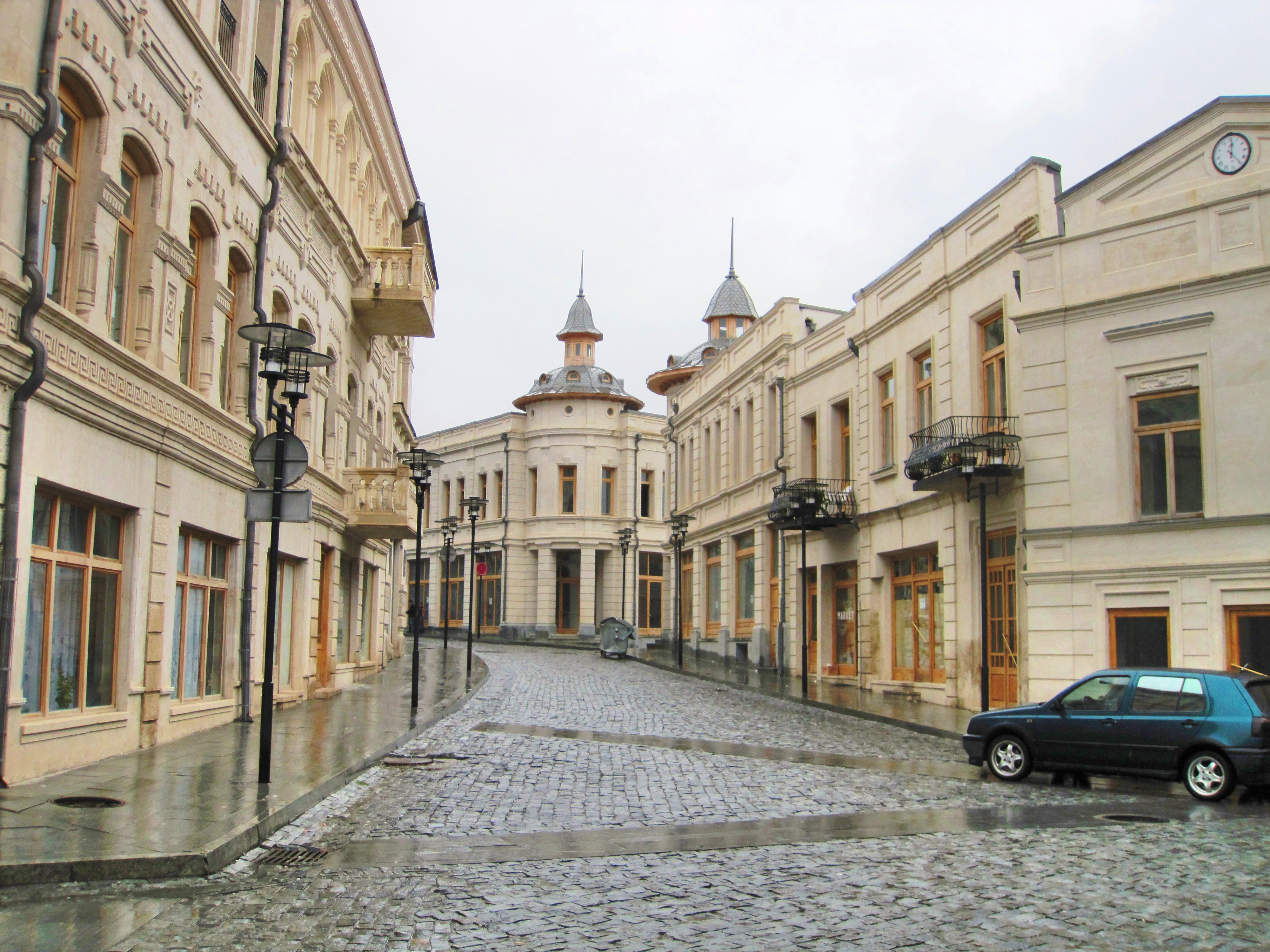|
Georgian Parliament Building (Tbilisi)
The Parliament of Georgia Building ( ka, საქართველოს პარლამენტის შენობა, tr) is the meeting place of the Parliament of Georgia, located in Tbilisi, the capital of Georgia. It is located in 8 Rustaveli Avenue, close to the foothills of Mount Mtatsminda. The building complex was constructed as the House of Government of Georgian SSR on the site of the demolished 19th-century Alexander Nevsky Cathedral and adjacent churchyard, with burials of the Georgian cadets killed during the Bolshevik invasion of 1921. It consists of two buildings; the "upper" building was designed by Viktor Kokorin and Giorgi Lezhava and built from 1933 to 1938. The "lower" building, along Rustaveli Avenue, was constructed by the same architects with an input from Vladimer Nasaridze from 1946 to 1953. The two buildings are connected with a courtyard, with staircases and fountains. The design of both buildings heavily uses elements of traditional Georgian ... [...More Info...] [...Related Items...] OR: [Wikipedia] [Google] [Baidu] |
Rustaveli Avenue
Rustaveli Avenue ( ka, რუსთაველის გამზირი, Rust'avelis Gamziri), formerly known as Golovin Street, is the central avenue in Tbilisi named after the medieval Georgian poet, Shota Rustaveli. The avenue starts at Freedom Square and extends for about 1.5 km in length, before it turns into an extension of Kostava Street. Rustaveli is often considered the main thoroughfare of Tbilisi due to the numerous governmental, public, cultural, and business buildings that are located along or near the avenue. The Parliament of Georgia building, the Georgian National Opera Theater, the Rustaveli State Academic Theater, the Georgian Academy of Sciences, Kashveti Church, the Georgian Museum of Fine Arts, Simon Janashia Museum of Georgia (part of the Georgian National Museum), and Biltmore Hotel Tbilisi among others, are all located on Rustaveli. History Rustaveli Avenue has its origins in the Digomi Road which connected Tbilisi to the North Caucasu ... [...More Info...] [...Related Items...] OR: [Wikipedia] [Google] [Baidu] |
Zviad Gamsakhurdia
Zviad Konstantines dze Gamsakhurdia ( ka, ზვიად კონსტანტინეს ძე გამსახურდია; ; 31 March 1939 – 31 December 1993) was a Georgian politician, human rights activist, dissident, professor of English language studies and American literature at Tbilisi State University, and writer who became the first democratically elected President of Georgia in May 1991. A prominent exponent of Georgian nationalism and pan-Caucasianism, Zviad Gamsakhurdia was involved in Soviet dissident movement from his youth. His activities attracted attention of authorities in the Soviet Union and Gamsakhurdia was arrested and imprisoned numerous times. Gamsakhurdia co-founded the Georgian Helsinki Group, which sought to bring attention to human rights violations in the Soviet Union. He organized numerous pro-independence protests in Georgia, one of which in 1989 was suppressed by the Soviet Army, with Gamsakhurdia being arrested. Eventually, ... [...More Info...] [...Related Items...] OR: [Wikipedia] [Google] [Baidu] |
Seats Of National Legislatures
A seat is a place to sit. The term may encompass additional features, such as back, armrest, head restraint but may also refer to concentrations of power in a wider sense (i.e "seat (legal entity)"). See disambiguation. Types of seat The following are examples of different kinds of seat: * Armchair, a chair equipped with armrests * Airline seat, for passengers in an aircraft * Bar stool, a high stool used in bars and many houses * Bench, a long hard seat * Bicycle seat, a saddle on a bicycle * Car seat, a seat in an automobile * Cathedra, a seat for a bishop located in a cathedral * Chair, a seat with a back * Chaise longue, a soft chair with leg support * Couch, a long soft seat * Ejection seat, rescue seat in an aircraft * Folding seat * Hard seat * Infant car seat, for a small child in a car * Jump seat, auxiliary seat in a vehicle * Pew, a long seat in a church, synagogue, or courtroom * Saddle, a type of seat used on the backs of animals, bicycles, lap etc. * ... [...More Info...] [...Related Items...] OR: [Wikipedia] [Google] [Baidu] |
Legislative Buildings In Europe
A legislature (, ) is a deliberative assembly with the legal authority to make laws for a political entity such as a country, nation or city on behalf of the people therein. They are often contrasted with the executive and judicial powers of government. Legislatures can exist at different levels of government–national, state/provincial/regional, local, even supranational (such as the European Parliament). Countries differ as to what extent they grant deliberative assemblies at the subnational law-making power, as opposed to purely administrative responsibilities. Laws enacted by legislatures are usually known as primary legislation. In addition, legislatures may observe and steer governing actions, with authority to amend the budget involved. The members of a legislature are called legislators. In a democracy, legislators are most commonly popularly elected, although indirect election and appointment by the executive are also used, particularly for bicameral legislat ... [...More Info...] [...Related Items...] OR: [Wikipedia] [Google] [Baidu] |
Buildings And Structures In Tbilisi
A building or edifice is an enclosed structure with a roof, walls and windows, usually standing permanently in one place, such as a house or factory. Buildings come in a variety of sizes, shapes, and functions, and have been adapted throughout history for numerous factors, from building materials available, to weather conditions, land prices, ground conditions, specific uses, prestige, and aesthetic reasons. To better understand the concept, see ''Nonbuilding structure'' for contrast. Buildings serve several societal needs – occupancy, primarily as shelter from weather, security, living space, privacy, to store belongings, and to comfortably live and work. A building as a shelter represents a physical separation of the human habitat (a place of comfort and safety) from the ''outside'' (a place that may be harsh and harmful at times). buildings have been objects or canvasses of much artistic expression. In recent years, interest in sustainable planning and building practi ... [...More Info...] [...Related Items...] OR: [Wikipedia] [Google] [Baidu] |
Government Buildings In Georgia (country)
A government is the system or group of people governing an organized community, generally a state. In the case of its broad associative definition, government normally consists of legislature, executive, and judiciary. Government is a means by which organizational policies are enforced, as well as a mechanism for determining policy. In many countries, the government has a kind of constitution, a statement of its governing principles and philosophy. While all types of organizations have governance, the term ''government'' is often used more specifically to refer to the approximately 200 independent national governments and subsidiary organizations. The main types of modern political systems recognized are democracies, totalitarian regimes, and, sitting between these two, authoritarian regimes with a variety of hybrid regimes. Modern classification systems also include monarchies as a standalone entity or as a hybrid system of the main three. Historically prevalent forms ... [...More Info...] [...Related Items...] OR: [Wikipedia] [Google] [Baidu] |
Kutaisi
Kutaisi ( ; ka, ქუთაისი ) is a city in the Imereti region of the Georgia (country), Republic of Georgia. One of the List of oldest continuously inhabited cities, oldest continuously inhabited cities in the world, it is the List of cities and towns in Georgia (country), fourth-most populous city in Georgia after Tbilisi, Batumi and Rustavi. It lies west of Tbilisi, on the Rioni River, and is the capital of Imereti. Historically one of the major cities of Georgia, it served as the political center of Colchis in the Middle Ages as the capital of the Kingdom of Abkhazia and Kingdom of Georgia and later as the capital of the Kingdom of Imereti. From October 2012 to December 2018, Kutaisi was the seat of the Parliament of Georgia as an effort to decentralize the Georgian government. History Archaeological evidence indicates that the city functioned as the capital of the Colchis in the sixth to fifth centuries BC. It is believed that, in ''Argonautica'', a Greek litera ... [...More Info...] [...Related Items...] OR: [Wikipedia] [Google] [Baidu] |
Georgian Parliament Building (Kutaisi)
The Georgian Parliament Building in Kutaisi ( ka, საქართველოს პარლამენტის შენობა ქუთაისში, tr) was constructed from 2011 to 2012 in Kutaisi, traditionally the second most important city of Georgia (country), Georgia, west of Tbilisi, the nation's capital, to house the Parliament of Georgia. Built by the Spanish architecture firm CMD Ingenieros, the building was inaugurated on 26 May 2012 and, according to the respective constitutional clause, became the main seat of the newly elected Parliament in October 2012 until the legislature moved back to Tbilisi in January 2019. The exterior of the building is dominated by a by oval-shaped great glass and steel dome ploughed by a roof-like concrete element that rests on the vault. It was constructed on the initiative of then-President of Georgia Mikheil Saakashvili on the site of Glory Memorial, the Glory Memorial to Soviet soldiers of World War II; the monument was ... [...More Info...] [...Related Items...] OR: [Wikipedia] [Google] [Baidu] |
Tbilisi
Tbilisi ( ; ka, თბილისი, ), in some languages still known by its pre-1936 name Tiflis ( ), ( ka, ტფილისი, tr ) is the Capital city, capital and List of cities and towns in Georgia (country), largest city of Georgia (country), Georgia, located on the banks of the Kura (Caspian Sea), Kura River. With around 1.2 million inhabitants, it contains almost one third of the country's population. Tbilisi was founded in the fifth century Anno Domini, AD by Vakhtang I of Iberia and has since served as the capital of various Georgian kingdoms and republics. Between 1801 and 1917, then part of the Russian Empire, it was the seat of the Caucasus Viceroyalty (1801–1917), Caucasus Viceroyalty, governing both the North Caucasus, northern and the South Caucasus, southern sides of the Caucasus. Because of its location at the crossroads between Europe and Asia, and its proximity to the lucrative Silk Road, throughout history, Tbilisi has been a point of contention ... [...More Info...] [...Related Items...] OR: [Wikipedia] [Google] [Baidu] |
Red Army Invasion Of Georgia
The Red Army invasion of Georgia (12 February17 March 1921), also known as the Georgian–Soviet War or the Soviet invasion of Georgia,Debo, R. (1992). ''Survival and Consolidation: The Foreign Policy of Soviet Russia, 1918-1921'', pp. 182, 361–364. McGill-Queen's Press. was a military campaign by the Russian Soviet Federative Socialist Republic, Russian Soviet Red Army aimed at overthrowing the Social Democratic Party of Georgia, Social Democratic (Mensheviks, Menshevik) government of the Democratic Republic of Georgia (DRG) and installing a Bolsheviks, Bolshevik regime (Communist Party of Georgia (Soviet Union), Communist Party of Georgia) in the country. The conflict was a result of expansionist policy by the Russians, who aimed to control as much as possible of the lands which had been part of the former Russian Empire until the turbulent events of the World War I, First World War, as well as the revolutionary efforts of mostly Russian-based Georgian Bolsheviks, who did not ... [...More Info...] [...Related Items...] OR: [Wikipedia] [Google] [Baidu] |







